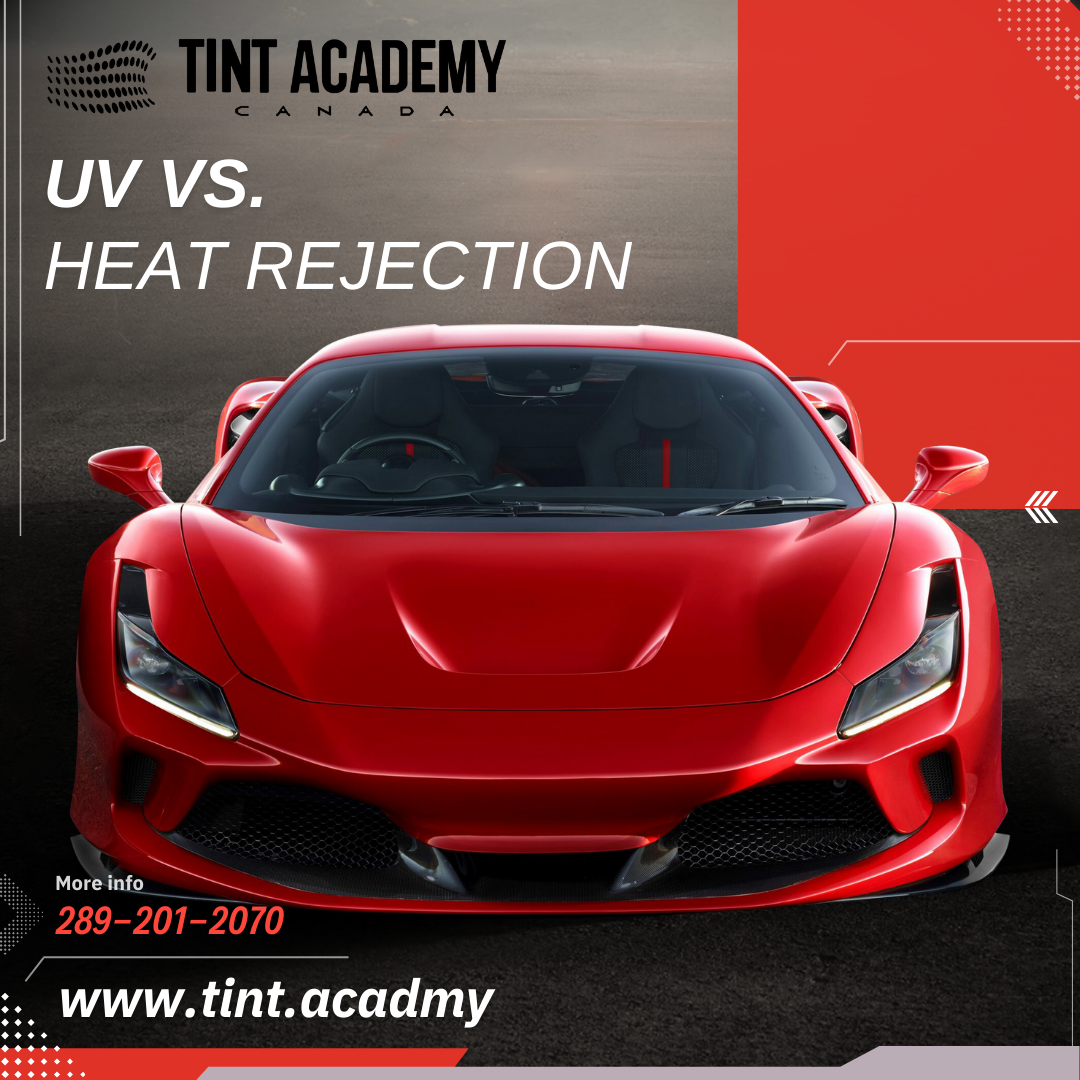UV rejection and solar heat rejection are two distinct properties of window tinting films, each serving different purposes but they are completely different components and often get "mixed up" when it comes to marketing.
We often see Window Tinters get these two components mixed up and market "99% heat rejection" which is untrue.
Different shades of the same type of Window Film, whether dark or light, have the same infrared and UV rejecting technology. However, the darker film will reject more heat because it blocks more visible light.
Window film contains UV absorbers that prevent the transmission of UV radiation into the interior. UV rays are known to cause skin damage, contribute to fading of interior furnishings, and increase the risk of certain types of skin cancer. Window Tinting significantly reduces UV transmission, offering protection to occupants and preserving the longevity of interior materials.
So what are the differences?
1. **UV Rejection**:
- - UV (Ultraviolet) rays are a component of sunlight that is not visible to the human eye. These rays are known to cause damage to skin, fade colors of fabrics and furniture, and contribute to skin cancer.
- - UV rejection measures the film's ability to block UV radiation from passing through the window. A higher UV rejection percentage means more UV rays are prevented from entering the interior space.
- - UV rejection is important for protecting occupants inside buildings or vehicles from the harmful effects of UV radiation.
2. **Solar Heat Rejection**:
- - Solar heat refers to the heat energy transmitted by sunlight. When sunlight passes through windows, it can increase the temperature inside a building or vehicle, leading to discomfort and increased energy usage for cooling.
- - Solar heat rejection measures the film's ability to block or reflect solar heat, thus reducing the amount of heat that enters the interior space through windows.
- - A higher solar heat rejection percentage indicates that the film is more effective at reducing the transfer of solar heat, thereby helping to keep interiors cooler and potentially reducing the need for air conditioning.
While both UV rejection and solar heat rejection are important characteristics of window tinting films, UV rejection primarily focuses on protecting against harmful UV radiation, while solar heat rejection primarily focuses on reducing heat transfer and improving comfort levels indoors. Some window tinting films are designed to offer high performance in both areas, providing comprehensive protection and comfort benefits.
That’s why the best way to understand a film’s level of heat rejection is to look at its Total Solar Energy Rejection (TSER). This measurement takes into consideration heat from the whole solar spectrum, covering infrared, visible light and UV. Put simply, if a film has 50% TSER, it rejects 50% of the sun’s heat. Clear, simple, useful.
While technically true statements like “rejects up to 99% of infrared heat” might be great marketing, they’re not exactly telling the full story when it comes to heat rejection. If you do your research and compare films with a reliable measurement like TSER {Total Solar Energy Reduction}, you can be confident of the amount of heat rejection you will achieve and avoid disappointment.




Share and get 15% off!
Simply share this product on one of the following social networks and you will unlock 15% off!